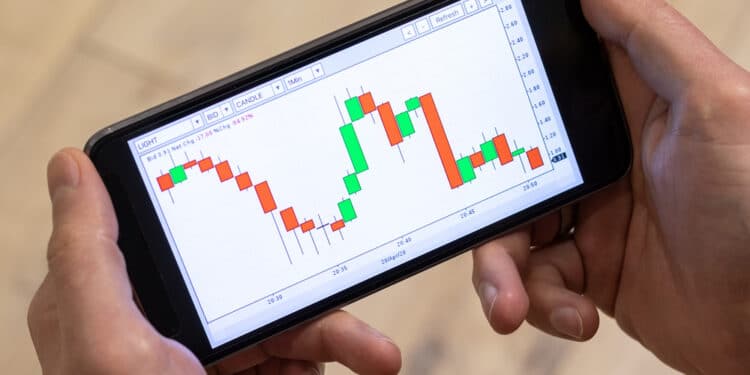Price level analysis involves analyzing different price levels to identify those that acted as support or resistance. The levels that qualify to be valid supports or resistances are those that prices have retraced from several times in the past. These levels are important because they provide traders with possible trade entries and exits.
When done manually, identifying these levels can be tedious work, especially when done on numerous price charts. However, with the strides humanity has made in technology, it is now possible to automate this process. Programs have been developed that are capable of identifying all support and resistance levels on a chart and generating trade signals from them. These systems provide greater accuracy of analysis, all while doing it in a fraction of the time needed to do it manually.
Automated forex trading systems explained
Also known as forex robots or expert advisors (EAs), automated trading systems are programs that are capable of autonomously generating trade signals from a currency price chart. To do this, they take in instruction from the trader detailing how to qualify valid support and resistance levels, after which they prowl the markets in search of trade signals from the identified levels.
These robots have the advantage of running 24 hours a day, which yields more signals. Further, they are unencumbered by emotions, hence guarantee to always remain objective. Depending on your preference, you may choose either of two types of robots.
Types of automated trading systems
- Semi-automated robots
These are programs that are capable of performing price level analysis on a chart and identifying valid levels of support and resistance. With these levels, they autonomously generate appropriate trade signals. Other than identifying opportune entry and exit signals for your trades, they can also identify stop loss locations and profit targets.
By using a semi-automated system, you outsource your analytical duties to the program. The program identifies opportunities in line with your trading strategy. However, the onus to execute the trades lies solely with you.
- Fully-automated robots
A fully automated trading system is a totally autonomous program. This means that first of all, this program will identify levels of support and resistance. From these levels, it will observe how prices react when they approach these levels. With this information, it can then generate trend reversal and breakout signals, which it then executes automatically. These programs will even go as far as setting stop-loss and take-profit orders.
How to build an automated trading system
There are several of these automated systems in the market today that are capable of accurately performing price level analysis. Some of these are free while others require a subscription to access. However, nothing beats a system of your own creation, one whose bells and whistles you completely understand.
To build such a system, all you need is an EA builder, of which several options are available online. Once you settle on a builder, you can create your own robot in the following simple steps.
- Create a trading plan
The EA you’re creating will require input from the trader on the trading strategy to follow. Therefore, before you can build this program, you need to have a trading plan that clearly outlines your strategy. This is arguably the most vital part of this building process, as, without a proper trading plan, the signals produced will be erratic.
A good trading plan should answer the following questions:
- What currency pairs are you trading?
- How do you prefer to perform your price level analysis?
- What conditions must be met before a signal can be flagged as valid?
- What’s your risk management strategy?
- During which sessions do you prefer to trade?
- Program your EA
Once your trading plan is complete, it is now time to generate our automated trading system. Usually, each trading platform is coded in a specific programming language. A good forex robot must be coded in your trading platform’s native language. For this reason, it would be best if you were conversant in that coding language.
If you have no coding expertise, worry not. You can still hire a programmer and explain to them your strategy in excruciating detail. Alternatively, as aforementioned, there are several EA builders available online, on which you’ll just require to define your strategy, after which they’ll do the coding for you.
- Backtest your EA
Backtesting means subjecting your generated program through historical price charts, so as to gauge its performance on them. By doing this test, you can determine the profit potential of your trading plan, and by extension, that of your EA. If the robot fails at this stage, you can prevent further losses down the line by adjusting it accordingly, or going back to the drawing board altogether.
During this step, you will be checking to see how well your system identifies S/R levels. Further, you will be scrutinizing how well the program sticks to your risk management strategy, in placing the stop loss and take profit orders. As a rule of thumb, you should always aim for less risk than you stand to gain.
- Forward test your system
Once your program has passed the backtesting phase, you should subject it to live market conditions to gauge its performance in real-time. This can be done using a demo account. The aim of this test is to check whether the results from the backtest are consistent with those of the forward test. After all, you will be trading in the live market, so you want to be sure it works in real-time as well.
Conclusion
Price level analysis involves studying price levels and identifying valid resistance and support levels. With these levels, one can generate trade signals from breakouts and reversals from these levels. There are automated programs that can perform this price level analysis, and generate accurate trade signals. These can be semi-automatic in that they only point out the trade signals, or fully automated in that they go as far as executing the signals they generate.




